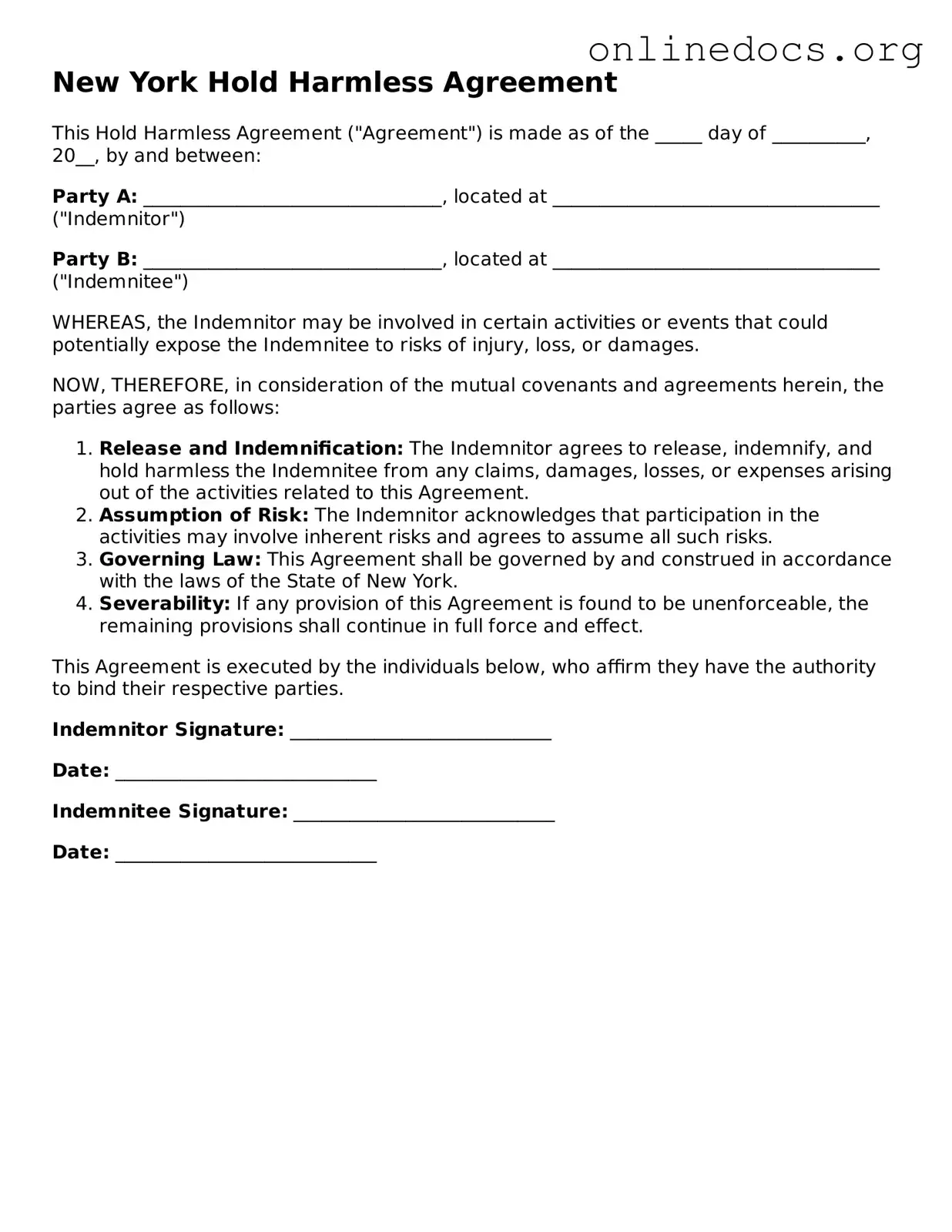Filling out a New York Hold Harmless Agreement form can be straightforward, but many individuals make common mistakes that can lead to complications. One frequent error is failing to provide complete information. Omitting details such as names, addresses, or dates can render the agreement invalid. It’s crucial to ensure that all fields are filled out accurately to avoid future disputes.
Another mistake often seen is the lack of clarity in the language used. Ambiguous terms or vague descriptions can lead to misunderstandings about the responsibilities and liabilities involved. Clear and precise language is essential to ensure that all parties understand their obligations.
Many people also overlook the importance of signatures. A common mistake is not having all necessary parties sign the agreement. Without proper signatures, the document may not be enforceable. Each party involved should carefully review and sign the agreement to confirm their acceptance of the terms.
Additionally, individuals sometimes neglect to review the entire document before submission. Skimming through the agreement can lead to missed clauses or conditions that could significantly impact the parties involved. Taking the time to read through every section is vital for ensuring that nothing is overlooked.
Another critical mistake is failing to consult with a legal professional. Some individuals believe they can navigate the agreement on their own, but this can be risky. Seeking legal advice can provide clarity and help avoid pitfalls that could arise from misinterpretation of the agreement’s terms.
Lastly, many people forget to keep a copy of the signed agreement. Once the form is filled out and submitted, it’s essential to retain a copy for personal records. This document can serve as vital evidence in case of any future disputes or claims. Always keep a signed copy in a safe place.
